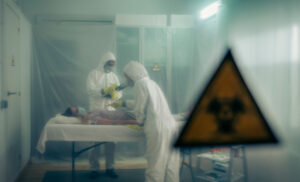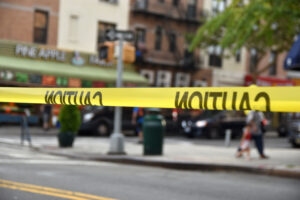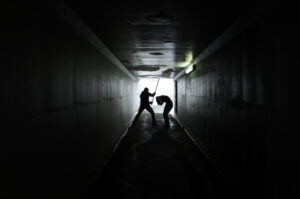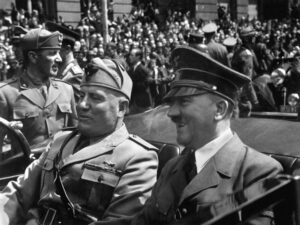Bath is an ordinary little town in rural Michigan, and May 18 1927 was an ordinary spring morning: men went off to work and mothers saw their children off to the new ‘consolidated’ school, the pride of the community. At 08.45 an explosion shattered the calm. By the time neighbors reached Andrew and Nellie Kehoe’s farm, it was blazing. As the townspeople tried to quench the flames, they heard another violent blast, this time from the direction of the school. With terrible foreboding, they raced over there.
One wing had collapsed completely. Children’s bodies were strewn among a tangled heap of wreckage. Desperate parents struggled to shift rubble and timbers, frantically searching for their children, weeping over the dead, and comforting the injured.
Andrew Kehoe arrived in his pickup and, as school superintendent Emery Huyck went to speak to him, Kehoe fired his rifle into the back of his truck, setting off a round of shrapnel-packed dynamite. The blast killed him, Huyck and several others. All day, people worked flat out rescuing survivors from the ruins, pausing only while 230 kg (500 lb) of unexploded dynamite found hidden in the school was de-activated.
Kehoe had planned the outrage carefully, accumulating the huge quantities of explosives from different shops without arousing suspicion (farmers commonly used dynamite in those days). As school handyman, he had ready access to the building to wire up the bombs.
It turned out he was in serious financial difficulties, which he blamed on taxes levied to build the new school. Recently, his wife’s medical expenses had added to his problems. Kehoe had battered Nelly to death before blowing up the farm. Her charred body was found the next day, along with his last message on a board hung from a fence: ‘Criminals are made, not born’.
When: May 18 1927
Where: Bath, near Lansing, Michigan, USA
Death toll: 38 children and seven adults died; 61 people were injured.
You should know: The school was rebuilt but demolished in 1975 to make room for a park commemorating the victims. A bronze plaque fixed to a white boulder lists their names.






















